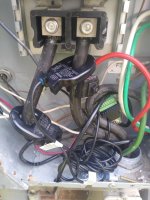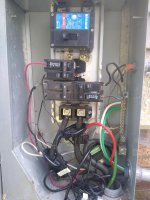Ravenvalor
Senior Member
- Location
- Triad region of NC
- Occupation
- Electrician
Hello,
I got a call from a homeowner who told me that his new solar installer installed the current sensors below the main breaker. This is causing his system to overlook the HVAC system. Would someone on this forum please recommend a thinner sensor that will fit between the line lugs on the main breaker and the meter can?
Thanks for the assistance.

I got a call from a homeowner who told me that his new solar installer installed the current sensors below the main breaker. This is causing his system to overlook the HVAC system. Would someone on this forum please recommend a thinner sensor that will fit between the line lugs on the main breaker and the meter can?
Thanks for the assistance.




